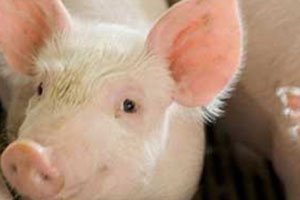Comparison of PRRS effect on performance in US and Denmark

It is uncommon for two pieces of valuable information to come out at more or less at the same time, so one is bound to make a comparison. The data has not been collected in the same way but appears to be robust. So what are the differences between US PRRS and EU PRRS?
A paper by Kristensen and Vinther (2013) from Denmark, reviewed the effects on performance of porcine reproductive and respiratory syndrome (PRRS) virus on breeder and finisher herds by comparing herds recorded as PRRS negative and PRRS positive in their specific-pathogen free (SPF) system. The survey involved 451 breeding herds, 375 nurseries and 273 finisher herds. The data presented here was for 2011 only but it was very similar to the previous year. In Denmark they have the EU strains and US vaccine strains circulating.
The second paper by Holtkamp and others (2013) where they were reviewing the costs of PRRS virus infections in the US, used monthly data from 80 breeding farms across the country between 2005-10 and also survey data provided by veterinarians for 2011. Finisher data was either from one site wean to finish or two site nursery and finisher herds. Similar production figure data to the Danes was assembled (see Table 1).
Of interest, the main differences between the Danish and US piglet production was the number born alive and the piglet mortality. The Danish figures for both were remarkably higher, due to their sow high prolificacy. The difference between the piglet mortality that might be associated with the presence of PRRS was similar at -0.11 piglets in the Danish pigs and surprisingly only -0.09 piglets in the US pigs although the piglet mortality differences were higher at -0.8 and -1.5%, respectively.
In the growing pig stages, the Danish nursery pigs had a higher mortality difference than the finisher pigs but a total mortality difference of -0.7%, which is surprisingly low. In contrast, the difference between the PRRS positive and negative US herds was -3.3%, a substantial difference. There was also a significant depression in growth rate of 18g/day in the PRRS infected pigs but their feed conversion ratio was slightly better. There were minimal differences in ADG and FCR between the Danish herds.
Obviously, the two national production systems are different. The absolute performance figures are also different but the impact of PRRS virus US ‘wild’ strains do appear to be more severe than the EU and US vaccine strains that are circulating in the EU. The Danish authors thought their small differences were primarily due to the strategy to stabilise PRRS in the herds leading to a low circulation of the virus. The US has severe problems in stabilising the infection, especially in high density areas but the herds that broke down during the survey were kept out of the comparison on purpose. Interestingly, the US authors put an annual cost of the disease at $663.91 million, the cost/sow/year was $114.71 and the cost/finisher was $4.67. In comparison, the Danish cost of PRRS would appear to be approximately $1/pig (€0.75) finished, based on mortality.
It is hoped that the trade negotiators, looking at importing pig meat products and possibly pigs and semen from the US in the future, take this into consideration, otherwise we could import an infection, which could have a $1.5 billion (€1.13 billion) negative impact on EU pig production per year.
References:
Holtkamp, D.J. and others (2013) Assessment of the economic impact of porcine reproductive and respiratory syndrome virus on United States pork producers, Journal of Swine Health and Production, 21, 2, 72-84.
Kristensen, C.S. and Vinther, J. (2013) Effect of PRRS on productivity in chronic infected Danish herds. Proceedings of the American Association of Swine Veterinarians Meeting, San Diego, California, USA, pp 393-394.







